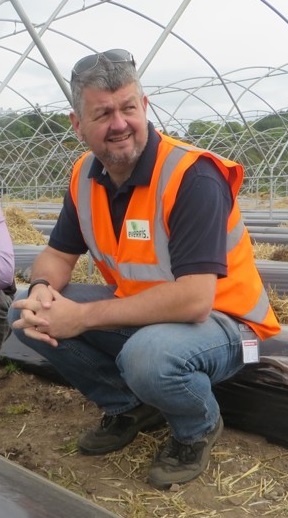Controlled released fertilisers sustainably drive yields
17th October 2017
In a bid to reduce the amount of nitrates being lost from agricultural land into surface and ground waters, potato growers should visit BP2017 to find out about the environmental
In a bid to reduce the amount of nitrates being lost from agricultural land into surface and ground waters, potato growers should visit BP2017 to find out about the environmental and operational credentials of Controlled Released Fertilisers (CRF).
Scott Garnett, from ICL Specialty Fertilizers, explains that the innovative technology could be a key tool to help farmers reduce their environmental impacts, while sustaining production.
“The agricultural industry is under increasing pressure to reduce their impact on the environment, particularly when it comes to the issue of nitrates in water,” says Scott.

Scott Garnett.
“And for this reason, it’s important that growers consider the use of CRFs, in preference to a standard nitrogen programme, given their proven ability to reduce nutrient leaching, while maintaining yield and simplifying the fertiliser application,” he adds.
Scott explains how the CRF technology works, in comparison to a standard nitrogen fertilizer, and why this reduces leaching.
“The granules have an E-max coating which is essentially a semi-permeable layer that controls the release of the fertiliser to the growing plant,” he says.
“This works in conjunction with the soil temperature and moisture content, with more fertiliser being made available as the soils warm-up. If the temperature then drops, the coating condenses and stops the flow of nutrients. It’s this gradual release of nitrogen that leads to an overall reduction in leaching,” he adds.
“What’s more, the product limits the need for top dressings and the fact that the fertilizer remains available to the plant over a longer period, offers vital nutritional support to the crop throughout the whole of the growing cycle, boosting yields.”
He points out that when the nutrients are fully released, the E-max coating disintegrates harmlessly into the soil.
One grower who is already benefitting from using a CRF is Mike Renouard, technical director of the Jersey Royal Company.
“We applied Agromaster CRF – manufactured by ICL Specialty Fertilizers – to three trial areas of the famous Jersey Royal variety of early cropping potatoes in 2016. The other three trial areas received a standard fertilizer, with both being applied two days before planting,” explains Mike.
“The CRF was applied from mid-March until the end of April 2016 at a rate of 180 kilograms of nitrogen per hectare. When we monitored the crop, the earlier digs didn’t show much of a difference between the untreated control and the CRF treated potatoes,” he adds.
“However, after 12 weeks, we saw up to 8% yield increase in some fields which is fantastic.”
According to Mike, the benefits of CRF are numerous, as they also tackle the issue of leaching.
“From an environmental perspective, Agromaster helps to minimise leaching and this is extremely important for our farming practices. Reducing chemical residues is a very hot topic on our Island.”
Alister Leggatt from Affinity Water believes that working collaboratively with farmers, to reduce the amount of nitrates that are reaching watercourses and groundwater, that are subsequently abstracted for drinking water, is going to be key in the future.
“All drinking water must meet the current drinking water standard for nitrate of 50mg/l as NO3. Because of this requirement, we’ve been monitoring the concentration of nitrates in water for over 50 years and whenever samples indicate there is a risk of not meeting the required standard – we have to implement costly measures to ensure drinking water is compliant,” says Alister.
“This can involve blending higher nitrate waters with lower nitrate waters, and in some cases specialised water treatment works have been built. However, the implementation of these steps all drive up costs to our customers and that’s why we need to try and minimise the risk of the nutrients reaching watercourses and leaching into groundwater in the first instance,” he adds.
“And I believe that working collaboratively with farmers is going to be key to reducing the concentrations that are currently being detected.”
